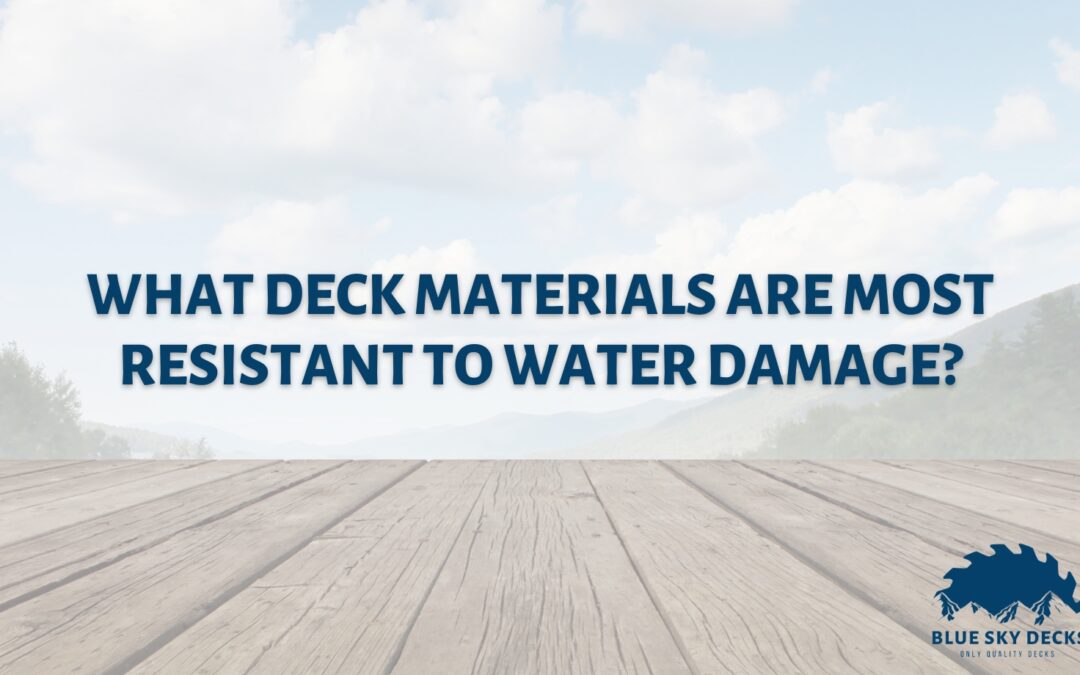If you are planning on building a new deck, you are probably wondering about durability. The last thing you want is to repeat this process within a few short years. Some deck materials are much more resistant to water than others.
Even if it means spending a little more upfront, it might be worth investing in water-resistant decking materials to ensure that your deck lasts. As you consider your options, here are some factors to keep in mind.
Pros and Cons of Decking Materials:
- PVC DECKING
Capped PVC boards are the best deck materials for resisting moisture. The boards are made of 100% plastic and have an exterior finish that protects against stains and other damage. The cap protects the surface, making it more resistant to water damage than composite or wood decking.
Capped PVC boards cost more than composites or wood, but they last longer due to their durability and resistance to weather conditions like rain and snow. The boards are all-plastic with a protective outer layer that resists mold and mildew. This makes them a good choice for water-resistant deck materials.
- COMPOSITE DECKING
Composite decking is a water-resistant option. It includes both wood and plastic ingredients. While it is not one hundred percent waterproof, a composite deck can be a great alternative to wood.
People love composite decks because of their natural-wood appearance and resistance to mildew. Composite decks can be more expensive up front, but they are worry-free and low-maintenance, and their durability makes them worth every penny.
- WOOD DECKING
Wood decking is one of the most popular materials used for decks, and it’s easy to see why: wood has a natural beauty that will complement any home. It can also be much less expensive.
Wood comes in many different types including cedar, redwood (a western variety), cypress, and pine—and each type has its own unique properties and benefits when used as decking material. Cedar is naturally resistant to rot but requires diligent maintenance; redwood is hard-wearing yet soft enough not to splinter when walked on; cypress resists decay even in extremely wet conditions like those found along Florida’s Gulf Coast beaches; and pine boards tend toward being softer than other woods which makes them ideal for use around children because they won’t splinter if stepped on by bare feet.
If you use natural wood for your deck, you’ll need to treat it with a protective coating every couple of years to protect it from damage caused by exposure to water. The best type of protective coating is one that is easy to apply and lasts for a long time. Pressure-treated lumber is the most durable type of wood and has a long lifespan, but it’s also more expensive than natural wood.
The biggest downside to wood decking is that it isn’t waterproof. It will absorb water if it’s exposed to rain or snow for long periods of time, which can lead to rotting and warping. Consider using pressure-treated wood in order to reduce damage from exposure to the elements.
Need More Answers?
If you would like to talk to the experts about what materials are best for your deck, and help plan your dream deck, we invite you to contact us at Blue Sky Decks today.

